Museum of the Origins of Man
THE MOVEMENT IN POST-PALEOLITHIC TWO-DIMENSIONAL ART
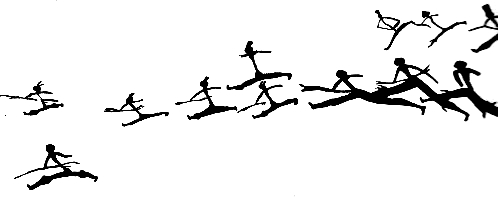 Fig. 32A3) Wave of warriors (drawing of the painting).
Fig. 32A3) Wave of warriors (drawing of the painting).
Size: The painted animal of greater dimensions is a bull, which reaches 1.10 m. The men are much smaller, some are only 2 to 3 centimeters tall.
Technique of working: painting. Red color.
These images are not photographed, but drawn, as the paintings are very disfigured.
Localization: Cueva of the Val of the Charco of the Agua Amarga, Spain.
NOTE: It was always believed that these Spanish Mesolithic paintings were derived from the Franco-Cantabrian Paleolithic paintings, i.e. from a more ancient artistic-religious civilization; but this is not certain. So, if this derivation will not be demonstrated, as a local birth in Spain, it is very probable that the people who produced this art were from Africa.
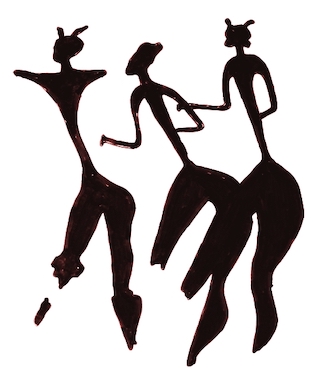 Fig. F42) Women dancing.
Fig. F42) Women dancing.
Size: approx. 4 inches tall; black color.
Localization: Cueva de la Saltadora, Valtorta Gorge, Spain.
Dating: 8,000 to 5,000 years BC.
These two-dimensional paintings probably belong to a civilization coming from Africa, but with customs still similar to Paleolithic ones.
They are called "art of the Spanish Levant" and attributed to the Mesolithic. They are the product of a civilization "in delay", if we consider that in the Middle East there was already the Neolithic with ceramics.
This is a very beautiful work, but it could also depict three masked men, since the breasts are not visible and the head seems to be masked. Female representations, in fact, as long as they exist, always have breasts.
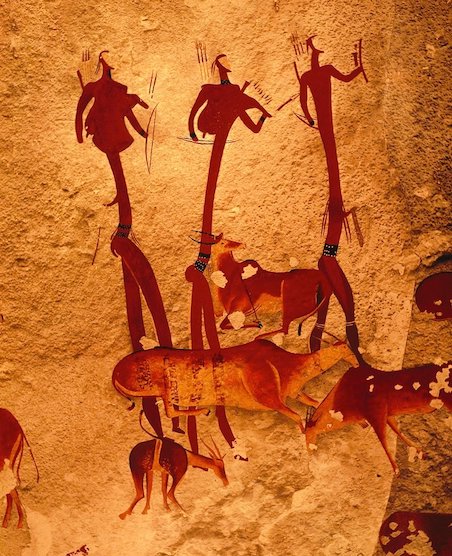 Fig. F43) Painting representing a group of masked Bantues armed with spears attacking the Bushmen.
Fig. F43) Painting representing a group of masked Bantues armed with spears attacking the Bushmen.
Art of the Bushmen.
Origin: Buschman's Hoek, Streksoom district, Cape Province (South Africa)(by G.W. Stow and D. F. Bleek, 1930).
Note the stylistic deformation of the human figures and the accentuated effectiveness of the movement of the race in battle.
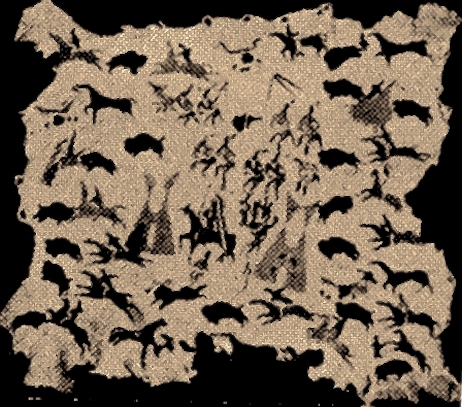 Fig. F44) Painting of bison hunting scenes on elk skin, with tents and dance scene.
Fig. F44) Painting of bison hunting scenes on elk skin, with tents and dance scene.
Indians of the prairies of North America (from Indian Art of the U.S.).
Note the great movement of animals which are depicted more accurately than human images.
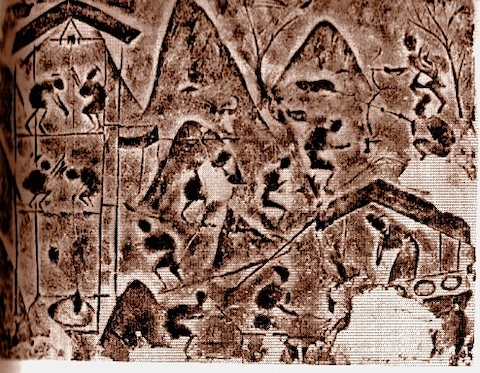 Fig. F45)Engraving on tile (cast).
Fig. F45)Engraving on tile (cast).
It depicts salt miners working in the quarry and hunters chasing game with crossbows.
Note that all the human figures have a remarkable movement.
Origin: Szechwan Province (China).
Dating: approx. 1800 years. Han dynasty.
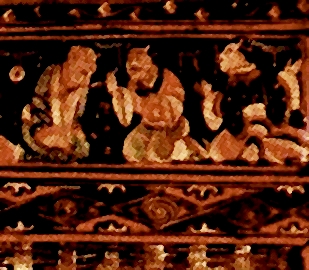 Fig. F46) Representation of men painted on a lacquer hood (detail).
Fig. F46) Representation of men painted on a lacquer hood (detail).
Chinese art.
Note the representation of movement, the expression of faces and the description of the behavior of these Chinese officers.
In two-dimensional oriental art, there is a superiority over European two-dimensional art of the same period for the movement of images along with the accuracy of drawing.
Dating: about 1900 years.
Location: Seoul Museum (South Korea).
NEXT
Index
HOME PAGE
Copyright©1999-2020 by Museum of the Origins of Man, all rights reserved.






